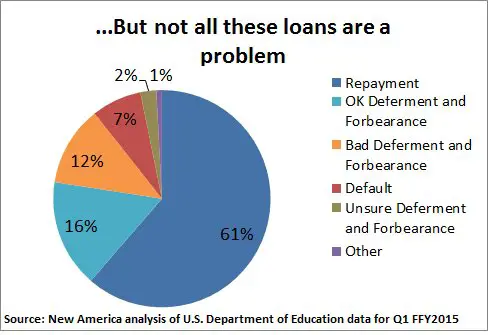Are you a small business owner looking to streamline your payroll process? Setting up a small business payroll can seem daunting, but fear not! In this article, we will walk you through the steps of how to set up a small business payroll and ensure smooth operations for your employees. From understanding payroll taxes to selecting the right software, we’ve got you covered. So, let’s dive right in and explore how to set up a small business payroll effectively, without any hassle or confusion.
How to Set Up a Small Business Payroll
Running a small business involves numerous responsibilities, and one vital aspect is setting up a payroll system. Accurately managing employee compensation, taxes, and other financial obligations is crucial to maintaining a smooth operation. While the task may seem daunting, it can be simplified by following the right steps. In this guide, we will walk you through the process of setting up a small business payroll, covering everything from choosing a payroll system to calculating employee salaries and taxes. Let’s get started!
1. Choose the Right Payroll System
The first step in setting up a small business payroll is selecting the most suitable payroll system for your needs. There are three main options to consider:
- Manual Payroll: This approach involves manually calculating and processing employee salaries, tax deductions, and other payroll-related tasks. While it may appear cost-effective initially, manual payroll can be time-consuming and prone to errors.
- Payroll Software: Investing in payroll software can simplify the payroll process significantly. These software solutions automate calculations, generate pay stubs, and help with tax filings. Look for reputable payroll software providers that offer features aligned with your business requirements.
- Outsource Payroll: If you prefer to focus on core business activities and minimize payroll-related responsibilities, outsourcing payroll can be an excellent option. Professional payroll service providers handle the entire payroll process, including tax withholdings and filings.
Consider your business’s size, budget, and resources when choosing between these options. Assessing your specific needs will help determine the best approach for your business.
2. Obtain an Employer Identification Number (EIN)
Before setting up your small business payroll, you need to obtain an Employer Identification Number (EIN) from the Internal Revenue Service (IRS). An EIN serves as a unique identifier for your business and is necessary for reporting employment taxes and other payroll-related obligations.
To obtain an EIN, you can complete an online application on the IRS website or apply through mail or fax. The process is free, and once approved, you will receive your EIN immediately. It’s important to have your EIN ready before moving forward with the payroll setup process.
3. Gather Employee Information
To ensure accurate payroll processing, you need to gather essential employee information. Here are the key details you should collect:
- Personal Information: Obtain each employee’s full name, address, Social Security number, and date of birth.
- Employment Status: Determine whether employees are full-time, part-time, or contractors. This information is crucial for tax purposes.
- Bank Account Details: If you plan to offer direct deposit, request employees’ bank account information, including account number and routing number.
- Withholding Allowances: Employees must complete Form W-4 to determine their withholding allowances for federal income tax purposes.
- State-Specific Forms: Some states require additional forms, such as state withholding allowance certificates. Familiarize yourself with your state’s requirements.
Ensure that you securely store this information to protect your employees’ privacy.
4. Determine Payroll Schedule
Establishing a payroll schedule is crucial for ensuring timely employee payments. Consider the following factors when deciding on a payroll schedule:
- Frequency: Determine whether you will pay employees weekly, bi-weekly, semi-monthly, or monthly. State laws and industry practices may influence your decision.
- Payroll Processing Time: Allocate enough time for payroll processing, including gathering all necessary information, calculating salaries, and generating pay stubs.
- Tax Deposit Deadlines: Familiarize yourself with federal and state tax deposit deadlines to ensure compliance.
Make sure to communicate the payroll schedule to your employees, so they know when to expect their paychecks.
5. Calculate Employee Salaries
Accurately calculating employee salaries is essential to ensure fair compensation. Consider the following components when calculating salaries:
- Hourly Wages: For employees paid on an hourly basis, multiply the number of hours worked by the hourly wage rate.
- Salaried Employees: Salaried employees receive a fixed salary for a specific period. Divide the annual salary by the number of pay periods in a year.
- Overtime: Determine overtime pay for eligible employees based on federal and state regulations. Usually, overtime pay is 1.5 times the regular hourly rate for hours worked beyond 40 hours per week.
- Commission and Bonuses: If applicable, calculate commission and bonus payments based on your predetermined criteria.
Ensure you accurately calculate salaries to avoid any disputes or legal issues down the line.
6. Determine and Withhold Payroll Taxes
As an employer, you are responsible for withholding various payroll taxes from your employees’ wages. Some of the common payroll taxes include:
- Federal Income Tax: Calculate federal income tax withholding based on employees’ Form W-4 and the tax withholding tables provided by the IRS.
- State Income Tax: Research your state’s income tax rates and withholding requirements to calculate state income tax withholding.
- Social Security and Medicare Taxes: Both employers and employees contribute to Social Security and Medicare taxes. Calculate and withhold the respective percentages based on current rates.
- Additional Taxes: Depending on your business’s location, there may be additional taxes like local taxes or disability insurance. Research applicable laws to ensure compliance.
Remember to stay updated on tax rates and changes to ensure accurate withholding.
7. Choose a Payroll Method
As you set up a small business payroll, you need to decide on a payroll method. Consider the following options:
- Manual Calculation: If you opt for manual payroll, ensure you have accurate salary calculations, tax tables, and the necessary forms to complete payroll calculations.
- Payroll Software: Payroll software streamlines the payroll process, automating calculations and generating necessary forms. Choose a reliable payroll software that aligns with your business needs.
- Outsourced Payroll Provider: Working with a professional payroll service provider can relieve the burden of payroll processing. They handle calculations, tax withholding, and other payroll-related tasks on your behalf.
Evaluate the pros and cons of each method and choose the one that best fits your business’s requirements.
8. Record Keeping and Compliance
Maintaining proper records and ensuring compliance with relevant laws and regulations is crucial for your small business payroll. Consider the following practices:
- Keep Detailed Payroll Records: Maintain accurate records of employee earnings, tax withholdings, and other payroll-related information. Store these records securely and create a systematic filing process.
- Comply with Reporting Requirements: Familiarize yourself with federal and state requirements for reporting wages and taxes, including filing quarterly and annual reports.
- Stay Updated on Employment Laws: Stay informed about labor laws, minimum wage changes, overtime regulations, and other employment-related laws that may impact your payroll process.
- Periodic Audits: Conduct periodic internal audits to identify any inconsistencies or discrepancies in your payroll records and rectify them promptly.
By maintaining proper records and ensuring compliance, you can avoid potential penalties and legal issues.
Setting up a small business payroll may appear complex at first, but with careful planning and the right tools, you can streamline the process. By selecting the appropriate payroll system, accurately calculating salaries, withholding payroll taxes, and maintaining proper records, you can ensure smooth payroll operations. Remember, payroll compliance is critical, so stay updated on relevant tax laws and reporting requirements. By implementing an efficient payroll system, you can focus on growing your business while ensuring your employees receive accurate and timely compensation.
How to Do Payroll | Payroll for Small Businesses | Payroll for Entrepreneurs | Gusto Payroll
Frequently Asked Questions
Frequently Asked Questions (FAQs)
How do I set up a small business payroll?
To set up a small business payroll, follow these steps:
1. Determine your payroll schedule.
2. Obtain an Employer Identification Number (EIN).
3. Collect necessary employee information and paperwork.
4. Choose a payroll system or software that suits your needs.
5. Set up your payroll accounts and tax withholdings.
6. Calculate employee wages and deductions.
7. Process payroll and ensure timely payments to employees.
8. File required tax forms and make necessary tax payments.
What is an Employer Identification Number (EIN) and how do I obtain one?
An Employer Identification Number (EIN) is a unique identification number assigned to businesses by the Internal Revenue Service (IRS). To obtain an EIN for your small business, you can apply online through the IRS website, via mail, fax, or by phone.
What employee information and paperwork do I need for payroll setup?
You will need to collect the following information from each employee:
– Full name, address, and Social Security number
– Employment start date
– Pay rate or salary
– Tax withholding allowances
– Bank account details for direct deposit (if applicable)
What are the options for payroll systems or software for small businesses?
There are various payroll systems and software available for small businesses, including cloud-based platforms, integrated accounting software, and standalone payroll software. Some popular options include QuickBooks Payroll, Gusto, Paychex, ADP, and Xero.
What accounts and tax withholdings do I need to set up for payroll?
You will typically need to set up the following accounts and tax withholdings:
– Federal Income Tax withholding
– State Income Tax withholding (if applicable)
– Social Security and Medicare taxes (FICA)
– Unemployment taxes (both federal and state)
Consult with a tax professional or use payroll software to ensure you are complying with the specific requirements for your location.
How do I calculate employee wages and deductions for payroll?
To calculate employee wages, multiply the number of hours worked by the employee’s hourly rate or use their predetermined salary amount. Deductions may include federal and state taxes, Social Security and Medicare taxes, and any voluntary deductions such as health insurance or retirement contributions.
How often should I process payroll for my small business?
The frequency of payroll processing depends on your business needs and state regulations. Common options include weekly, bi-weekly (every two weeks), semi-monthly (twice a month), or monthly. Choose a schedule that works best for you and your employees.
What tax forms do I need to file for small business payroll?
The tax forms you may need to file for small business payroll include Form 941 (Employer’s Quarterly Federal Tax Return), Form 940 (Employer’s Annual Federal Unemployment (FUTA) Tax Return), and any state-specific tax forms. Additionally, you may need to provide employees with their W-2 forms by January 31st of each year. Consult with a tax professional to ensure you are filing the correct forms for your business.
Final Thoughts
Setting up a small business payroll may seem daunting, but it is an essential aspect of running a successful company. To begin, ensure you have accurate employee information, such as social security numbers and tax forms. Next, select a payroll system or software that suits your needs and budget. Once you have set up the system, enter employee details and establish a payroll schedule. Lastly, comply with legal requirements by understanding and adhering to tax laws and regulations. By following these steps, you can efficiently manage your small business payroll and ensure accurate and timely payments for your employees.



